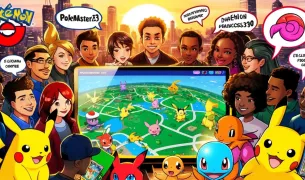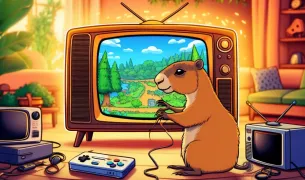Far beyond being a mere cartoon, South Park has ingratiated itself into the fabric of pop culture through a blend of biting satire, social commentary, and unabashed humor. Since its debut in 1997, creators Matt Stone and Trey Parker have delivered a show that balances on the edge of what is acceptable while painting an absurd, yet sometimes eerily accurate, portrait of society. Like a reflection in a funhouse mirror, South Park exaggerates traits to the point of absurdity. Yet, these caricatures often reveal a core truth about human nature and the social issues of our time.
In essence, South Park is a story about four boys— Kyle, Stan, Cartman, and Kenny—and their various adventures in the titular Colorado town. However, the simplicity of this setup is deceptive; the show provides a platform for the creators to express their views on current events, politics, religion, race, and countless other hot-button issues. South Park immediately stands out with its unique art style—the characters were created using paper cut-outs. Still, the show's unflinching approach to comedy cemented its status as a television icon.
Tackling the Peaks and Valleys of South Park's Production Quality
Not without its flaws, the South Park series has faced criticism for technical shortcomings, particularly in its early season box sets. Despite the adventures of the residents of South Park injecting relentless humor into the lives of its fans, the initial DVD releases were marred by subpar video quality. The imperfect nature of its presentation on these box sets could leave viewers longing for the crisp visuals of late-season episodes or the polished aesthetic of the South Park movie. This lackluster quality mirrors watching an old VHS tape rather than a modern digital format, somewhat dampening the vibrant satire.
Moreover, some fans were disappointed by the absence of commentary from the series' creators in these releases, which had the potential to add substantial value for those who relish behind-the-scenes insights. Although the commentaries were made available via CD upon request, this oversight is a missed opportunity to enhance the comprehensive collection enthusiasts truly longed for.
Despite this presentation and added content drawbacks, South Park has always retained its core appeal. The cultural resonance of each episode's theme shows a fearless approach to reflecting the zeitgeist, and this compensates for any technical flaws. The colorful cast of characters and the outlandish scenarios ensure that each episode remains an engaging, albeit controversial, specter of modern television.
Conclusion: Gauging the Impact and Audience Response to South Park's Edgy Narrative
As South Park continues to evolve, so does its audience's perception of this boundary-pushing series. Viewers praise the show for its fearless storytelling and its creators' willingness to tackle taboo subjects with humor and irreverent wit. Devotees frequently catch themselves repeating iconic phrases and reminiscing about cherished episodes that not only brought them amusement but also prompted a shift in perspective, encouraging a more analytical view of the world.
However, South Park has also faced its share of detractors, citing the show's penchant for crude humor and sometimes graphic content as a step too far in the quest for laughs. Its comedic style is polarizing—while many celebrate the show's rawness and daring spirit, others find it distasteful and offensive. The series has never shied away from this controversy; it seems to embrace it as part of its identity.
South Park's enduring run is a reflection of its triumph, resonating profoundly and forging strong bonds with its viewers. This show has grown with its viewers, continuously redefining the landscape of adult animation and comedy. While the technical aspects of early-season releases may leave something to be desired, they ultimately do little to tarnish the show's reputation. The incisive writing, dynamic characters, and unapologetic approach carry South Park to the echelons of animated fame, assuring its place as a caustic but much-beloved chapter in television history.





